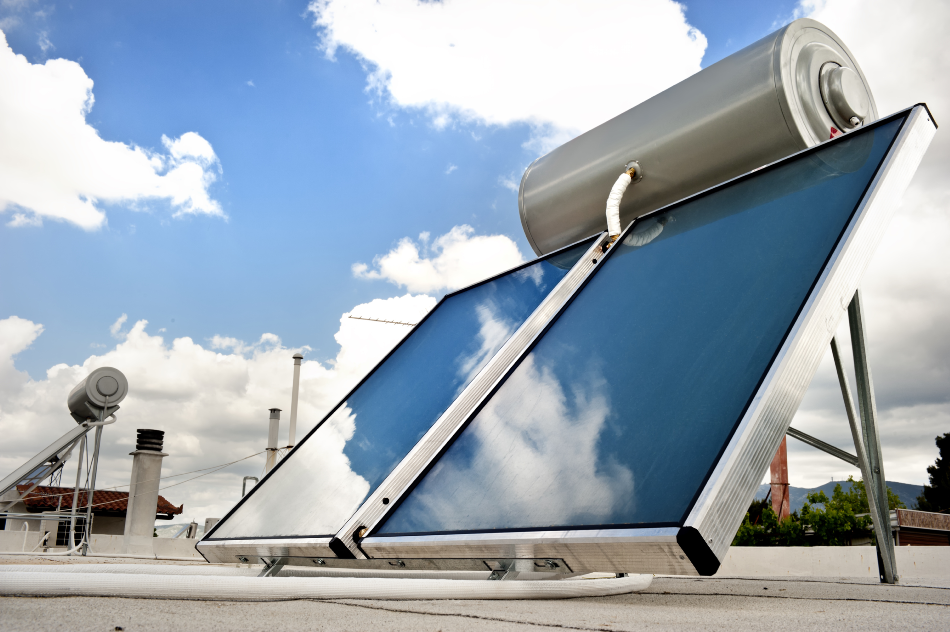Feb 19 2008

Image Credit: Antilo/Shutterstock.com
Article updated on 22/01/20 by Ben Pilkington
Using the energy from the sun to heat water reduces household hot water bills by at least 65% per year. This could accumulate to savings of thousands of dollars over the lifetime of the solar hot water system.
Solar water heating (SWH) systems also help the environment by reducing the amount of carbon dioxide emitted into the atmosphere due to lowering the building’s energy requirements.
How do Solar Water Heating Systems Work?
In an SWH system, the sun's energy is used to directly heat water. Water is heated as it travels through flat, glazed panels known as solar collectors, which are normally situated on the roof of the building. The heated water is then stored in an insulated storage tank. An auxiliary heater may be used to increase the water temperature when there is a limited supply of solar energy to meet the building’s hot water requirements.
SWH for Buildings
The majority of SWH systems for buildings consist of two main components:
- A solar collector, usually a flat-plate collector
- A storage tank
SWH systems can be categorized as active or passive, depending on whether they require a pump to move water through the system (active) or rely on physical forces like gravity or convection (passive).
Active Solar Water Heating Systems
Active solar water heaters use controllers and electric pumps to circulate water through the solar collectors. There are two types of active SWH systems: direct circulation and indirect circulation.
Direct-circulation systems employ pumps to circulate pressurized potable water directly through the collectors.
Indirect-circulation systems pump heat-transfer fluids instead of water through solar collectors, where the heat exchangers transfer the heat from the fluid to the potable water. The two most common, indirect systems are antifreeze and drain-back systems.
Passive Solar Water Heating Systems
Passive solar water heaters can use gravity or convection, which is when water circulates as it is heated. Since passive solar water heaters contain no electrical components, they are generally easier to maintain and more reliable than active systems. The two most popular types of passive systems are integral-collector storage systems and thermosyphon systems.
Source:
AZoCleantech